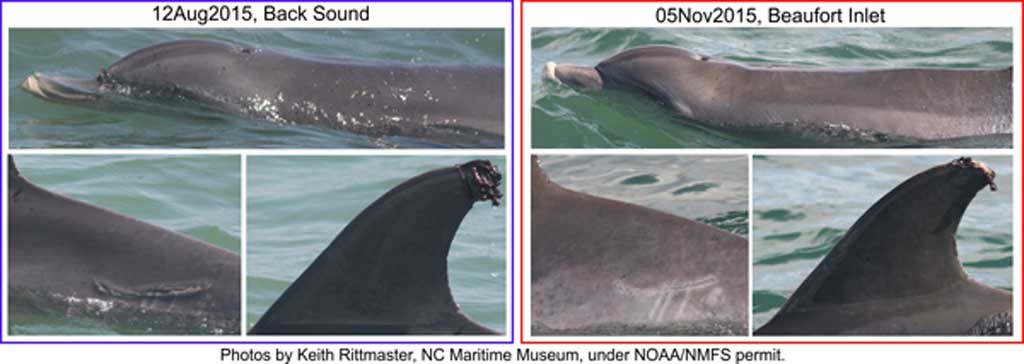Bottlenose Dolphin Caitlin, photographed since 1993
On Thursday, May 31, 2018, NCMM Natural Science Curator Keith Rittmaster and Research Assistant Nan Bowles headed out into the Newport River on the research vessel Spyhop in search of bottlenose dolphins. They encountered a group of five dolphins. One of the dolphins was a well-known female named “Caitlin”. Caitlin was first identified in Beaufort on June 14, 1993 by examining photographs showing the distinct notches on her dorsal fin, a process called photo-identification. Keith has photographed Caitlin every summer since 1993 – a total of 80 days over 25 years. She has only been seen in Beaufort during the months of April through October. Caitlin has also been seen in Wilmington, North Carolina by researchers doing similar work. Another dolphin seen that day was a presumably young mother with her neonate (new-born calf). We have documented a birth peak of bottlenose dolphin in April/May each year. This young mom’s dorsal fin was smooth (no notches), therefore not identified.
Find out more about local bottlenose dolphin photo-identification.
Photos by Keith Rittmaster under NOAA/NMFS permit.




